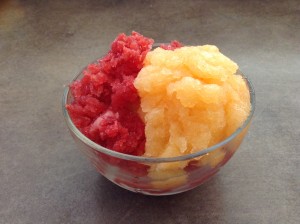Is Your Cereal as Healthy as You Think?
/Is your cereal as healthy as you think? Lots of cereals that are marketed as healthy don’t have a lot going for them. They’re marketed for what they don’t have in them, “low fat”, “low calorie”, etc. Many famous "healthy" cereals fall into this category. Many people are surprised to find out that their favourite cereal is actually contributing to their weight gain.
Instead of choosing a cereal for what it doesn’t have in it, I want you to choose your breakfast for what it does have in it. Choose to nourish your body instead of depriving it.
One of the most common things that I do when working with people is change their breakfast. You will likely benefit from changing your breakfast if you:
- Find yourself hungry again by 10am (and looking longingly at those donuts and croissants).
- Crave sugar mid-afternoon.
Choose a breakfast that naturally has lots of fibre so that it is slowly digested. Grains and pseudograins that are minimally processed have most of their fibre attached. Puffed cereals are digested quickly. Flakes are digested at a medium pace. Look for intact grains that take lots of chewing. Steel-cut oats are a fantastic example. So is making a cereal out of quinoa or buckwheat.
Ready to take your breakfast bowl up another notch? Or, not ready to switch cereals but want to reap the benefits of a healthier breakfast? Help your breakfast last longer by adding nuts and seeds (or their butters). Their protein and healthy fats will help you digest your breakfast even slower, keeping you full longer.
An example of a breakfast that has all this (and tastes delicious too) is overnight oats. Discovering overnight oats changed my mornings - I no longer crave muffins and pastries mid-morning.
Looking for more characteristics of a healthy breakfast, check out this article.






















